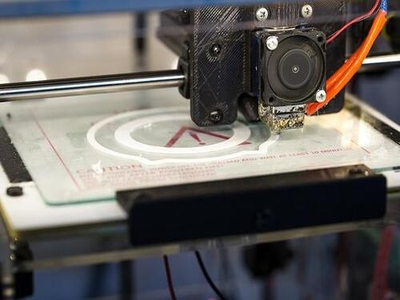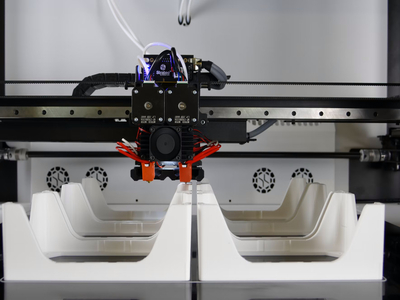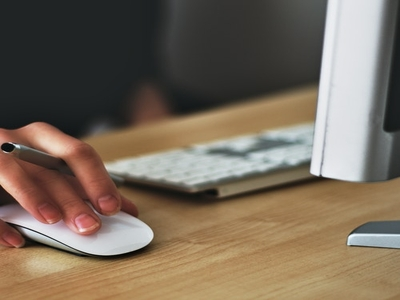In 3D printing, the speed at which a print is completed is measured in millimeters per hour (mm/hr) and depends on a variety of factors, including the type of filament being used, the size and complexity of the print, and the printer settings.
While there is no one-size-fits-all solution to speeding up 3D printing, there are several tips and tricks that can help you optimize your prints for faster results.
In this blog post, we will explore some of these methods and show how to speed up 3D printing!
How To Speed Up 3D Printing

3D printing is a rapidly evolving technology that has the potential to revolutionize manufacturing because one of the key benefits of 3D printing is its speed and efficiency.
However, there are a number of ways to further speed up the 3D printing process and below are some tips on how to speed up your 3D printing.
Use A Faster Printer
One way to speed up your 3D printing is to use a faster printer.
Some of the newer, more advanced printers can print at speeds up to 10 times faster than older models.
If you’re looking to speed up your printing, investing in a new, faster printer is a good place to start.
Read our related article where we review the BEST ABS 3D Printers on the market today. We tested and explored everything you need to know and compiled our findings in this guide.
Use Lighter Filaments
Another way to speed up your 3D printing is to use lighter filaments.
Unlike heavier filaments like ABS plastic – lighter filaments like PLA plastic require less time to heat up and cool down.
This can lead to shorter overall print times and increased efficiency.
Use Smaller Layer Heights
Using smaller layer heights is yet another way to reduce print times.
Smaller layer heights mean that each individual layer is thinner, requiring less time to print.
While this may not sound like a significant difference, it can lead to significant reductions in print time, especially for larger prints.
By following these tips, you can speed up your own personal printing process and get your prints done faster than ever before. Every moment saved adds up.
What is the best layer height in 3D printing? We explore different layer heights to see how they hold up for various projects (including an informative VIDEO!)
Different Factors That Affect The Print Speed

There are many different factors that can impact print speed in 3D printing. The first factor to consider is the type of filament used.
Faster prints tend to use less flexible filaments, such as PLA and ABS, as these materials are easier for the printer to extrude smoothly.
In addition, a simple, uniform design with few intricate details can often result in increased print speeds, as well.
Another important factor is the size and complexity of the print itself.
Smaller objects typically require less time from start to finish than larger objects, simply because there is less surface area.
Similarly, more complex designs usually take longer to print than simpler ones since they must be printed layer by layer in a precise pattern.
Ultimately, it’s up to you to determine what combination of filament material, design complexity, and other settings work best for your specific setup and goals.
Nevertheless, understanding these various factors is key to achieving optimal print speeds in 3D printing.
Read More: 3D Printer Setup Guide. New printer? Check out this simple guide to help you get started!
Tips And Tricks For Speeding Up Your Prints
When trying to speed up your prints, there are a few key tips and techniques that you can implement to help get the job done faster.
- First, one of the easiest ways to increase printing speeds is by lowering the layer height, especially on larger models that require many layers.
- Additionally, another effective way to increase print speeds is by increasing your infill percentage in regions where there is less structural support as less material will be needed for supporting curves and other complex shapes.
Overall, these simple strategies are easy ways to improve print speeds without compromising the quality or structural integrity of your prints.
So why not give them a try? You may be amazed at how much time you can save!
Read More: What is 3D Infill? Discover more about infill and infill patterns in this complete guide!
Different Software Settings To Improve Your Print Speed
There are several software settings that you can tweak to help improve your print speed.
For example, reducing the number of details in your design will allow you to print at a faster rate.
Similarly, selecting the “draft” printing option will also help to maximize the speed of your printer.
In addition, working with smaller documents and using fewer colors on your prints can also make a big difference in terms of print speed.
By keeping these settings in mind, you can create designs that are optimized for speed without sacrificing quality.
Ultimately, when it comes to increasing print speed, there’s no one-size-fits-all solution – it all depends on the specifics of your project and your specific hardware and software setup.
But by experimenting with different options, you should be able to find a balance between efficiency and quality that works best for you and your needs.
How Changing Your Printer Hardware Can Impact Your Print Speed

Printer hardware is an important factor in print speed.
The type of printer, the quality of the ink cartridges, and the speed of the processor all play a role in how fast your printer can print.
If you’re looking for a printer that can print quickly, you will need to pay attention to these factors.
Another factor that can impact print speed is the quality of the ink cartridges.
In general, higher-quality cartridges will produce better-quality prints. However, they also tend to be more expensive.
Finally, the speed of the processor plays a role in print speed. The faster the processor, the faster your printer will be able to print.
When shopping for a printer, be sure to pay attention to these factors to ensure that you’re getting a fast printer.
Read More: How Long Does it Take to 3D Print a Phone Case? Discover how long it could take to make the 3D-printed phone case of your dreams!
Conclusion
In today’s fast-paced world, it’s important to be able to get things done quickly.
However, when it comes to printing, it’s also important to find the right balance of speed and quality.
With so many different printers on the market, it can be difficult to know which one is right for you.
That is why it’s important to do your research and find a printer that can give you the quality you need without sacrificing speed.
Thanks for reading and I hope this article was helpful in finding the right printer for your needs.
Read More